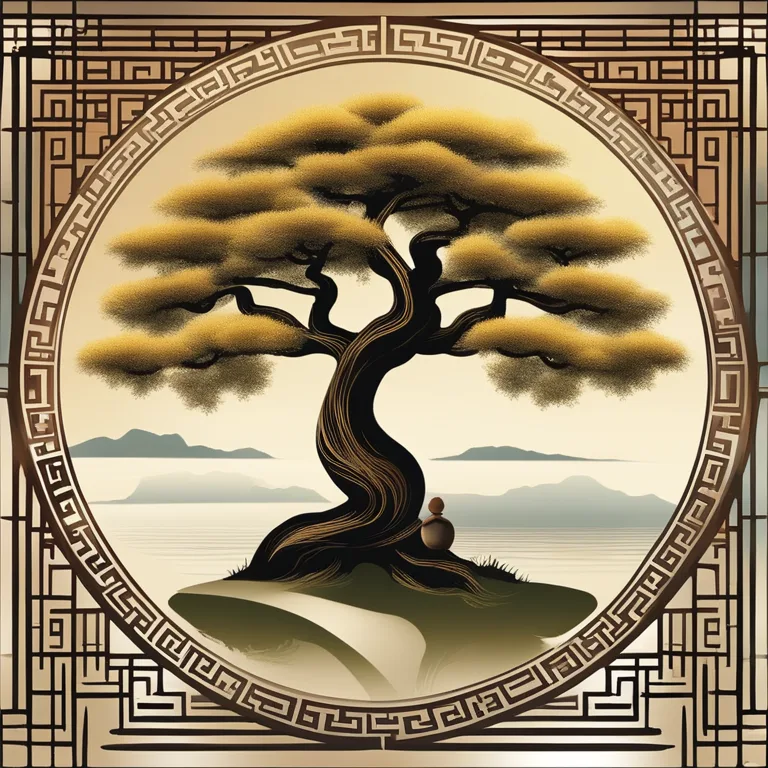
The Roots of Meditation Practice
Discover the ancient origins and development of meditation techniques across cultures and their journey to modern practices.
article by Hina Kurosawa
The Dawn of Meditation
The practice of meditation is often viewed as an intrinsic facet of the human quest for understanding and inner peace. Its beginnings are shrouded in the realms of pre-history, with the earliest documented evidence going back thousands of years. Ancient civilizations across the globe, including the Vedic society in India, Taoists in China, and Indigenous cultures, practiced forms of meditation, suggesting that people have long sought the benefits of this introspective exercise. Even before these records, it is likely that early humans engaged in meditative-like states during periods of quiet contemplation or as part of shamanistic rituals.

The Vedic Influence
The tradition of meditation is deeply rooted in the Vedas, ancient Indian scriptures that form the foundation of Hindu philosophy and practice, dating back as early as 1500 BCE. These texts describe various meditative techniques and their purposes, from spiritual connection to self-realization and enlightenment. The Vedic concept of Dhyana, a term for deep contemplation and meditation, has profoundly influenced subsequent generations and formed the bedrock of yogic and meditative practices in Eastern philosophy.

Buddhist Evolution
Another significant milestone in the historical tapestry of meditation emerged with the teachings of Gautama Buddha around the 6th to the 5th century BCE. Buddhism popularized meditation through the noble eightfold path as a means to attain Nirvana, or the release from suffering and the cycle of rebirth. The Buddhist approach to meditation, which emphasizes mindfulness and concentration, spread throughout Asia, each culture adapting it to their own traditions and spiritual contexts.

Taoist and Confucian Contributions
In the same era as Buddhism was taking root, in China, Taoist and Confucian traditions were also developing forms of meditation. Taoist meditation emphasized the flow of Qi, or vital energy, and aimed to achieve harmony between the human and the universe. Confucianism, on the other hand, focused more on meditative practices as a way of contemplating morals and practicing self-cultivation to achieve the ideal state of "ren" (humaneness or benevolence).
Sufism and the Mystical Path
Moving westward, meditation also occupies a central place in Sufism, the mystical branch of Islam. Sufi meditation practices, including Dhikr (remembrance of God), strive to bring the practitioner closer to a state of divine love and knowledge. The Whirling Dervishes, perhaps the most visually symbolic of these practices, use physical movement as a form of active meditation to reach spiritual ecstasy.
Modern Synthesis and Spread
The 19th and 20th centuries saw an unprecedented cross-pollination of Eastern and Western thought, leading to a global fascination with meditation. Theosophists, Transcendentalists, and later, counterculture movements of the 1960s, embraced and adapted these ancient practices. The scientific community's growing interest has led to research into the physiological and psychological benefits of meditation, cementing its place in modern society as both a spiritual and secular tool for enhancing well-being.
Meditation in the Digital Age
With the advent of the 21st century and beyond, meditation continues to evolve. Digital platforms now offer guided sessions, virtual reality meditation experiences, and apps that make meditation accessible across the globe. Despite high-tech enhancements, the core objectives of meditation remain the same: to slow down, introspect, and seek an inner state of tranquility that transcends the constant stimuli of the modern world.
Published: 1/8/2024
Modified: 1/8/2024
More predictions
Come back here soon to learn more about yourself and your future


Meditation Techniques: A Handbook
Discover the breadth of meditation methods to enhance your wellness journey.


Meditation: Finger Techniques Explored
Discover the art of finger meditation to harmonize body, mind, and spirit through ancient practices for modern wellness.


Meditation Techniques to Soothe OCD
Discover meditation practices designed to help manage OCD symptoms through mindful awareness and relaxation.